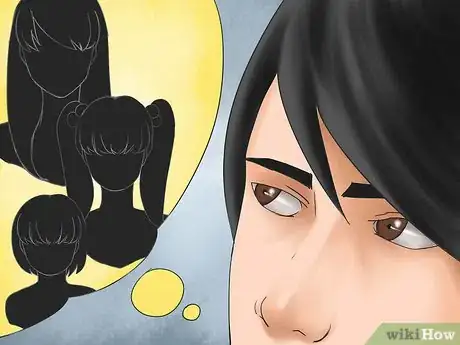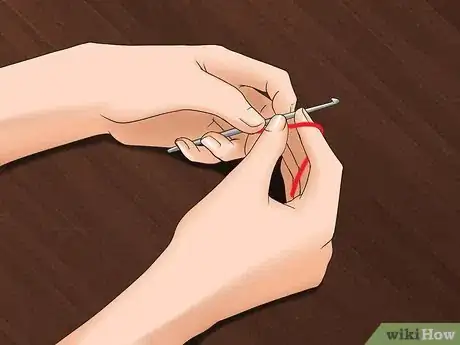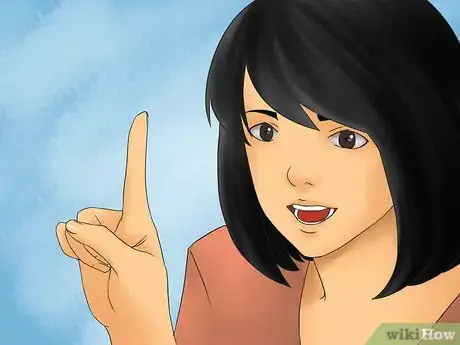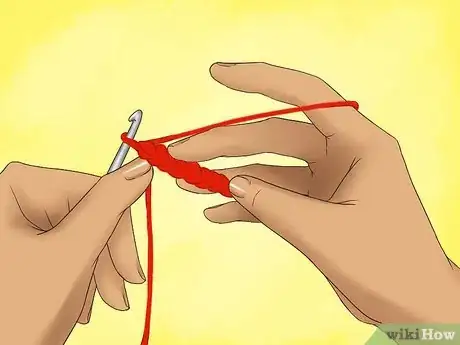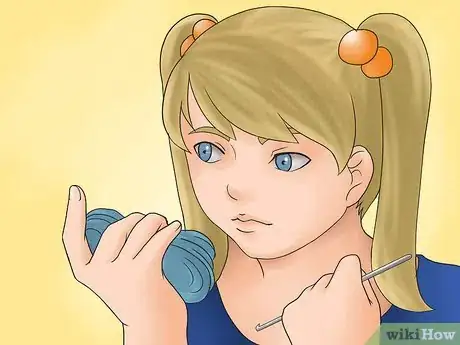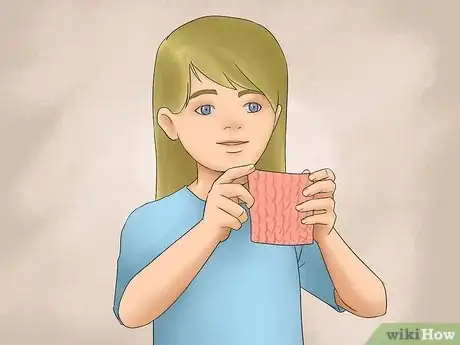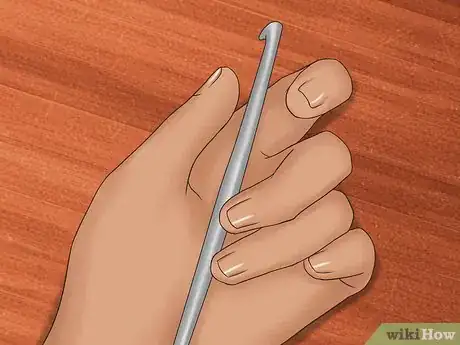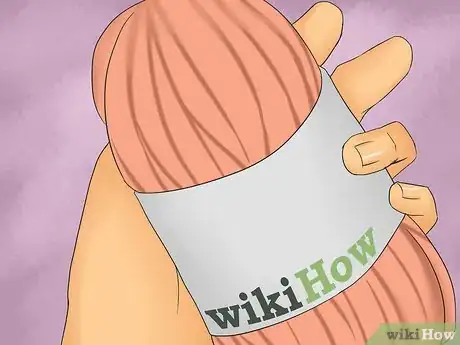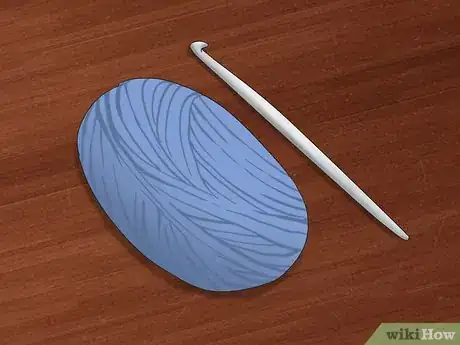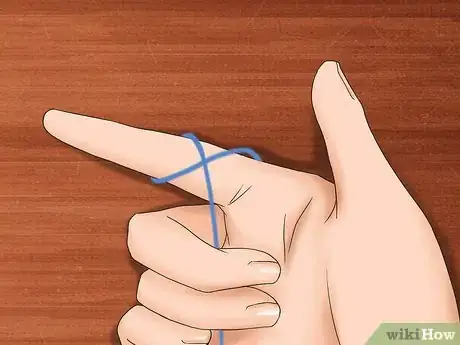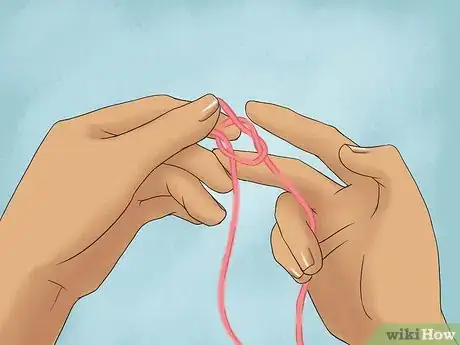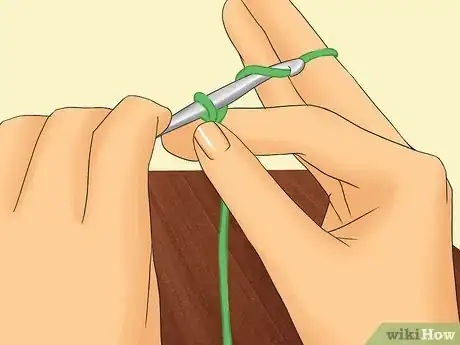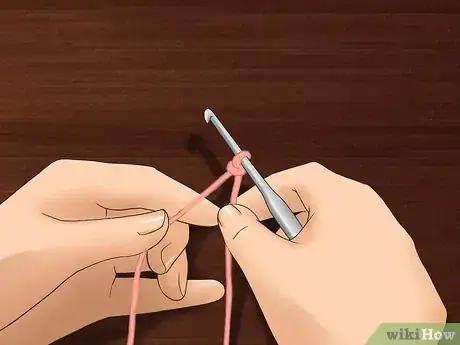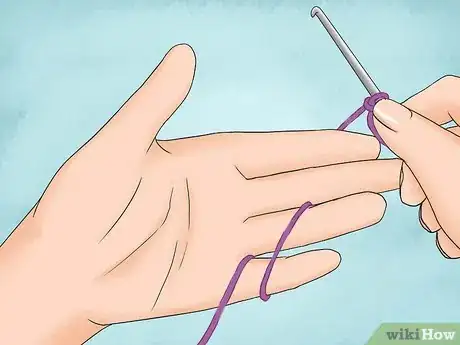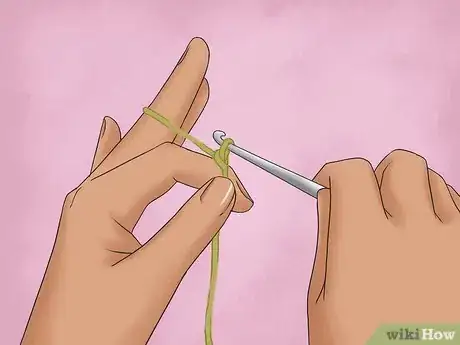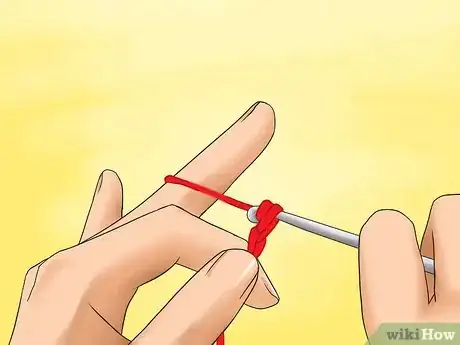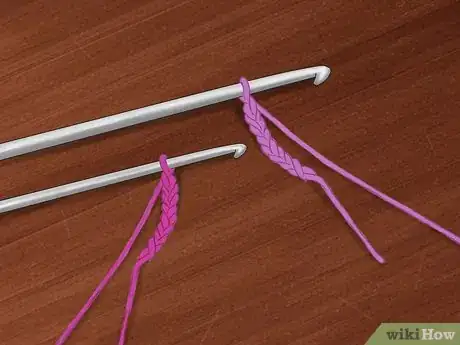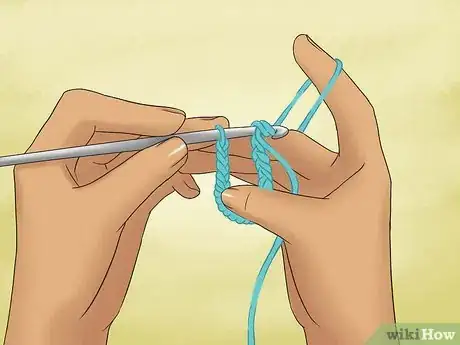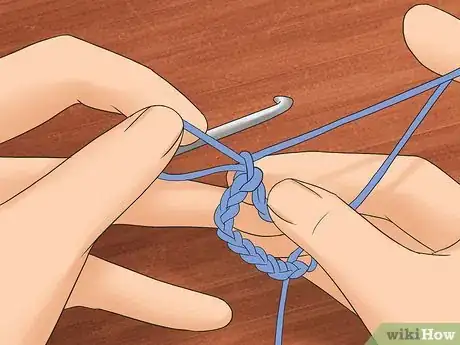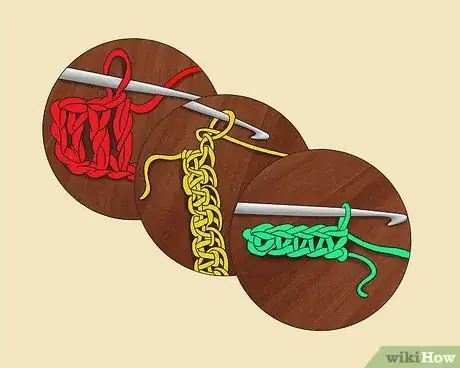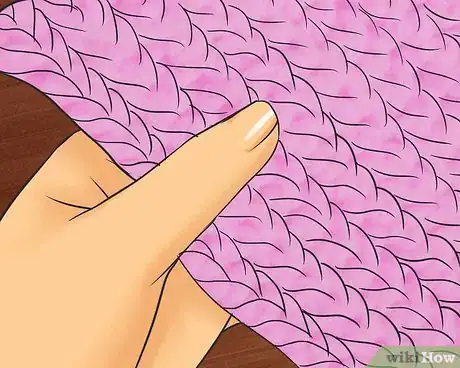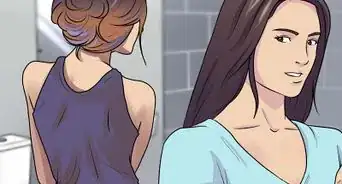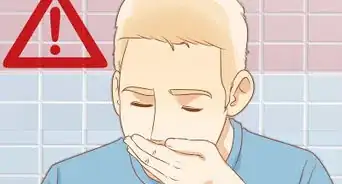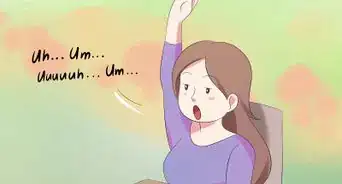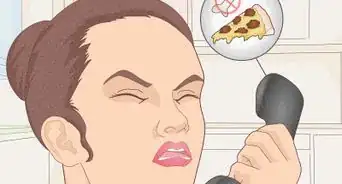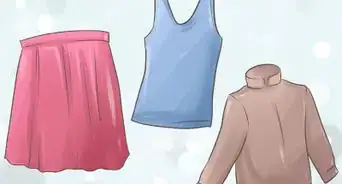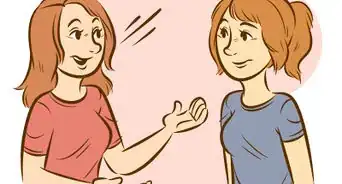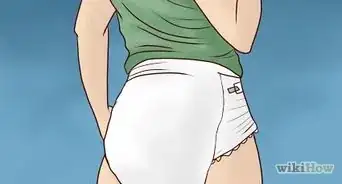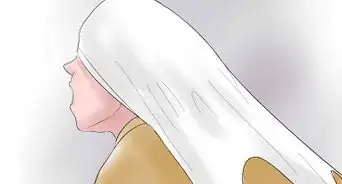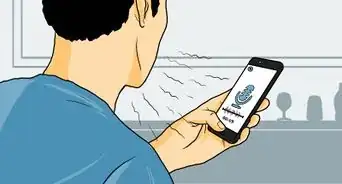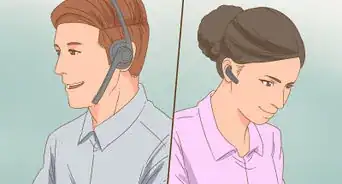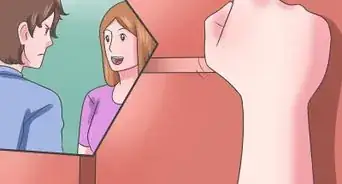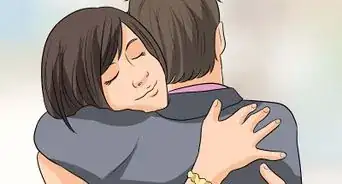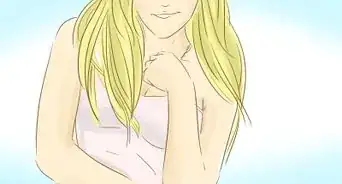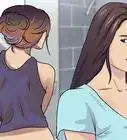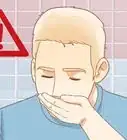X
wikiHow is a “wiki,” similar to Wikipedia, which means that many of our articles are co-written by multiple authors. To create this article, volunteer authors worked to edit and improve it over time.
This article has been viewed 20,116 times.
Crocheting is a fun craft that you can learn and enjoy as a kid. You can use it to create many different projects, like necklaces, blankets, and more.
Steps
Part 1
Part 1 of 7:
Considerations for the Teacher
-
1Know what to expect from each age group. Crocheting becomes easier for kids as they get older, but typically speaking, any child who is able to use a pencil and sit still for a few minutes is old enough to learn crocheting.[1]
- Between ages 4 and 8, kids are still working on their fine motor skills. You'll need to take a hands-on approach to teaching and let the child take plenty of time to learn each skill before moving onto the next.
- Between the ages of 9 and 12, kids can begin learning and practicing on their own, but you should still be there to answer questions and demonstrate new techniques.
- Once kids become teenagers, they can usually learn on their own and are happy to work without supervision.
-
2Demonstrate each technique. Regardless of the age group, it will usually be easiest to learn a new technique when that technique is first performed by someone else.
- If you cannot demonstrate a technique yourself, try to find a video guide or picture guide that clearly and slowly shows how the technique is performed.
-
3Explain each term as you use it. Each time you use a crochet term, you need to explain what that term means. Some kids have a hard time asking questions, so you should try to anticipate possible points of uncertainty and address them as you teach.
-
4Repeat rows. It's easy for beginners to forget how to start after they've finished what they were trying to make. Repetition is the best way to help a kid remember.
- When the child you're teaching finishes the first row, encourage his or her to unravel it and remake it from the beginning.
- Alternatively, after finishing the first row, start a new piece from the beginning instead of continuing from the old one.
-
5Let the kids express themselves. Allow the child you're teaching to exercise his or her creativity and to work at his or her own pace.
- Allow the child to select from a wide range of yarn colors and simple materials.
- Encourage the child to think of different projects that can be made with simple chains and stitches.
- Some kids will enjoy repeating the same technique over and over, while others may want to move onto a new technique as soon as possible. When kids are allowed to move at the pace they want, the activity will usually seem more fun for them.
-
6Be positive and proud. By praising a child's work, you help him or her feel proud of it, too. This sense of accomplishment can make kids enjoy the learning experience more.
- Verbal praise is excellent, but you can further the excitement by taking pictures of the child with his or her finished pieces.
Part 2
Part 2 of 7:
Setting Up
-
1Choose a large hook. Larger hooks are easier to hold and manipulate, so they're your best option when you're still learning basic techniques.
- Look for an H, I, or J hook. If you're shopping for hooks marked according to millimeter range, these would be 5 mm, 5.5 mm, and 6 mm, respectively.
- You can choose a slightly larger or slightly smaller hook, but make sure that it fits comfortably in your hand.
-
2Pick out a ball of yarn. Look for a chunky yarn and select any color that appeals to you.
- When learning how to crochet as a kid, it's best to use a simple yarn in a solid color. Avoid patterned yarn until after you've learned the basic techniques.
- Worsted weight and chunky/bulky weight yarns are easiest to work with, especially for beginners. They are also more suitable for use with larger hooks.
- The yarn should also be fairly smooth. For the time being, avoid strands that are super fuzzy since they can be more difficult to grasp and work with.
-
3Sit in a bright, clear area. Sit down at a table in a well-lit location. Remove everything from the table except for your yarn, crochet hook, and a pair of scissors.
Part 3
Part 3 of 7:
Making a Slipknot
-
1Wind the yarn around your fingers.[2] Take the loose end of yarn in your left hand and wrap it around two or three fingers of your right hand, creating a loop.
- Start at the palm-side of your hand and wrap the yarn over your forefinger.
- Wrap the yarn around the back of your fingers, past the middle or ring finger, and back up along the palm-side of your hand.
- You should create a full, closed loop. Hold this loop closed with the thumb of your right hand.
-
2Pull the yarn through the loop. Use your left hand to grab the yarn just before the loop. Pull this yarn through the loop, working from the bottom (palm-side) of the loop to the top (thumb-side).
- The yarn you grab should come from the side of the yarn still attached to the ball. Do not grab from the loose end.
- After completing this step, you should see a second loop form. Slide the first loop of yarn off your fingers once this second loop appears.
-
3Insert the crochet hook into the second loop. Slide the hooked part of your crochet hook into the second loop your created. Pull down on the loose yarn beneath your loops to tighten the yarn around the hook.
- The loop of yarn should be about 1 inch (2.5 cm) away from the top of your hook.
- When you pull down on the yarn, the first loop should turn into a knot and the second loop should close onto the hook.
- Once the yarn is tightly attached to the hook, you're ready to begin making stitches.
Part 4
Part 4 of 7:
Preparing to Stitch
-
1Hold the crochet hook. Grab the crochet hook with your right hand (if you're right-handed) or left hand (if you're left-handed). Hold it like a pencil or a knife, with the hooked portion pointing down and facing you.
- To hold the hook like a pencil, turn your hand to the side and hold the thumb, forefinger, and middle finger together. Grab the hook with these fingers, letting it extend just past your fingertips.
- To hold the hook like a knife, turn your hand down, with your palm pointing at the floor, and close the thumb, forefinger, and middle finger together. Slide the hook into the space between your thumb, forefinger, and middle finger.
-
2Hold the yarn between your fingers. As you unravel the yarn, hold it taut between the forefinger and thumb of your non-writing hand (the left hand if you're right-handed; the right hand if you're left-handed).
- You will need to grab the yarn with the hook as you create stitches.
- Do not use your fingers to manually twist the yarn around the hook.
Part 5
Part 5 of 7:
Creating Simple Chains
-
1Grab the yarn with your hook. Use your hook to grab the yarn. As you grab the yarn, twist the hook so that the yarn wraps around it in a clockwise rotation.
- If you have difficulty grabbing the yarn, hold the Slipknot in between the thumb and forefinger of your non-writing hand to create tension and try again.
- Grab yarn from the side still attached to the ball, not the loose end.
- The yarn needs to slide into the hooked part of your crochet hook.
-
2Pull the yarn through the loop on your hook. Carefully pull the yarn tucked into your hook through the Slipknot loop already on your hook.
- When you do this, the Slipknot hoop should turn into your first chain stitch.
- You should still be left with one loop on your hook.
-
3Repeat. The technique you used to create your first chain stitch is the same technique you should use to create the rest of your chain stitches.[3] Create as many chain stitches as you want until you feel comfortable with the process.
- Grab the yarn in the same way each time you want to make another chain stitch.
- For each chain stitch, you should pull the yarn through the loop already on your hook. A new stitch will form, and a new loop will appear on your hook.
- Right now, you should try to make loose chain stitches that are easy to see. Try to make each stitch the same size, too.
Part 6
Part 6 of 7:
Using Chains to Create Simple Projects
-
1Create chains of different sizes. You can create plenty of different projects just by making chains of different sizes. Figure out what you want to make, the crochet a chain long enough to wrap around what it needs to wrap around.
- For example, you can use a crochet chain to create a necklace, bracelet, ring, or skinny infinity scarf.
-
2Close the chain. Once you create a long enough chain, you'll need to close it into a loop. To close the chain, you will need to create a special stitch known as a slip stitch.
- With one loop still on your hook, insert the tip of the hook through the first chain stitch you created.
- Grab the yarn with your hook in the same way you grabbed it while creating chain stitches.
- Pull the yarn you just grabbed through the stitch and through the yarn loop on your hook.
- When done, the chain should form a connected ring and you should have one loop on your hook.
-
3Tie off the yarn.[4] Before you can use your project, you need to cut and tie the yarn to prevent the chain from unraveling.
- Cut the yarn still attached to the ball. Leave about 4 inches (10 cm) of loose yarn when you make the cut.
- Grab this loose yarn with your hook in the same way you grabbed yarn for your chain stitches.
- Pull the yarn you just grabbed through the loop on your hook. Continue pulling to form a tight knot. No loops should remain on your hook after this is done.
- Use scissors to cut off any excess yarn.
- Congratulations! You've just completed a simple crochet project.
Part 7
Part 7 of 7:
Learning Advanced Techniques
-
1Learn additional stitches. When you feel comfortable and confident in your ability to crochet chains, you can start learning more advanced stitches.
- Each time you practice a new stitch, you'll need to create a long foundation of chain stitches first. You'll need to work these new stitches into the loops of your chain.
- When learning a new stitch, try to create multiple rows using the new stitch. Continue creating rows of the same stitch until you become comfortable with the technique.
- After mastering the chain stitch and the slip stitch, the next stitches you should learn (in order) are:
- The single crochet stitch
- The double crochet stitch
- The triple or treble crochet stitch
-
2Pick out easy project patterns. After you've practiced your basic stitches, you can start using them to create simple projects like blankets and scarves.
- Look for crochet patterns written for children since the instructions will be easier to understand.
- Check the stitches listed in the instructions before you begin. Make sure that you know how to create all of the required stitches.
Community Q&A
-
QuestionIs there a 'best way' to crochet, or do all the strategies work well?
 Ash8131Community AnswerMost of the strategies work well; some better than others. What's most important is to find the strategies that work the best for you.
Ash8131Community AnswerMost of the strategies work well; some better than others. What's most important is to find the strategies that work the best for you. -
QuestionCan a 10 year old do triple stitches?
 Community AnswerYes, start with crocheting doubles first. As long as you count the sets of loops as you go it's not hard.
Community AnswerYes, start with crocheting doubles first. As long as you count the sets of loops as you go it's not hard. -
QuestionCan I do a chain without a hook, just with my fingers?
 Community AnswerYes, you can simply place each loop on your finger and use your finger the same you would use a hook. However, the chain will be very loose.
Community AnswerYes, you can simply place each loop on your finger and use your finger the same you would use a hook. However, the chain will be very loose.
Things You'll Need
- Chunky yarn in plain colors
- Crochet hook, size H, I, or J (5 mm, 5.5 mm, or 6 mm)
- Scissors
